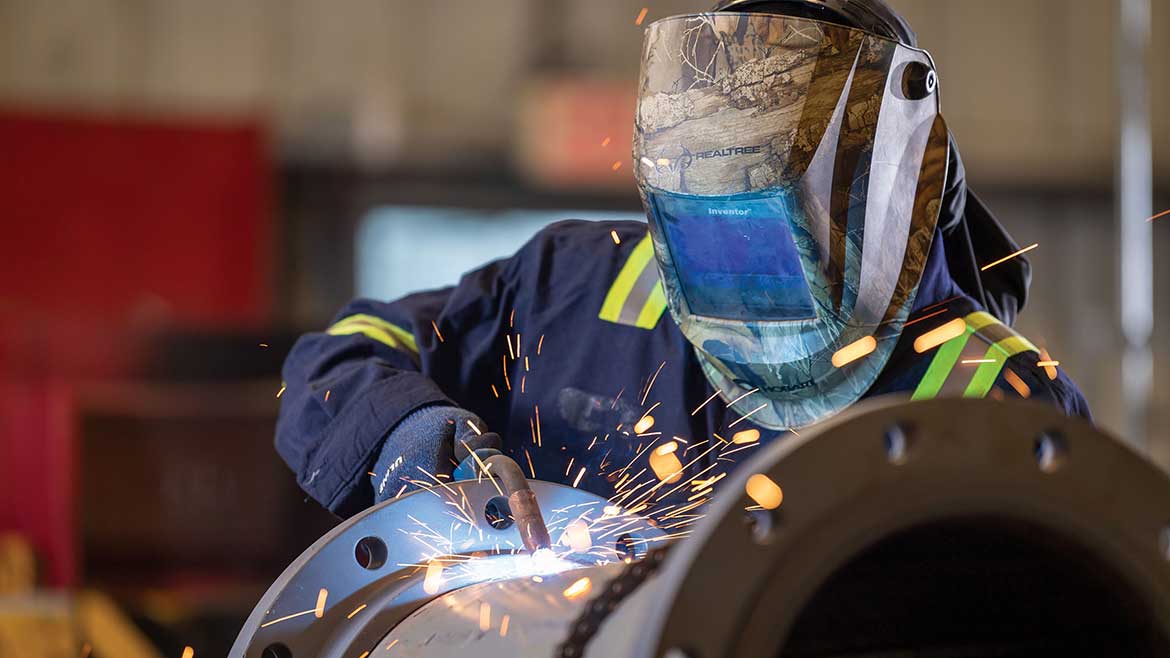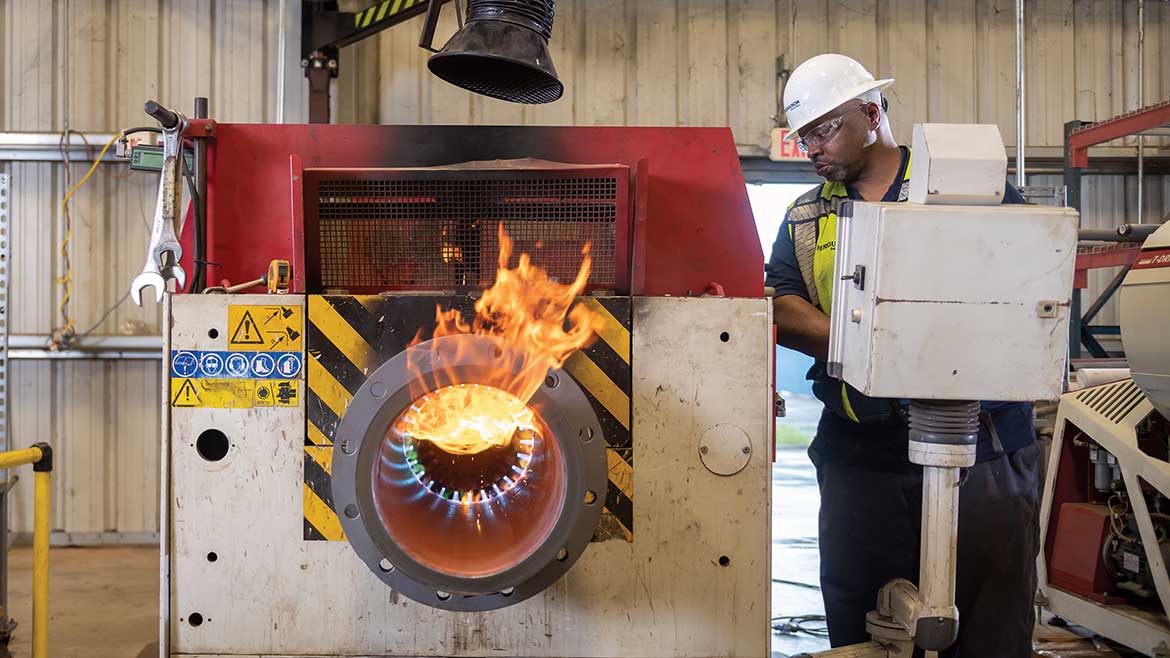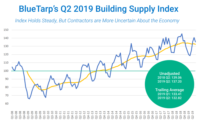Forecasting industry sectors continues to be a challenge with uncertain global and U.S. economic factors constantly changing. Because of its diverse project base and reliance on commodity prices and actions from overseas, the industrial PVF sector is particularly difficult to forecast. Nonetheless, PM Engineer talks with a handful of key industrial PVF players to hear first-hand what they’re experiencing to gain a pulse for the market.
In 2021, the State of the Industrial PVF Market was called “The Perfect Storm,” describing a set of ongoing challenges that resulted in a difficult time for the industrial market: commodity price increases, tariffs and trade disruption, freight inflation, supply chain disruption, fleet shortages and — of course — the ongoing lack of skilled labor.
According to these industrial pros, coming off of record highs in 2022, the health of the market today is more promising than 2021, but all of the above “storm clouds” are still at play.
Daniel Hogge, vice president, Ferguson Industrial says that while uncertainty persists, several factors point to a positive outlook for the diverse industrial sector. “We have seen a deceleration in the pent-up maintenance workload coming out of the pandemic while seeing significant capital project activity in various markets,” he explains. “In addition, we are seeing deflation in core commodities. Despite these unpredictable and sustained challenges, the industry has been resilient, and business operations have largely remained consistent.”
Many PHCP-PVF companies enjoyed high-performing years in 2022. Don Russell, vice president of sales for Merit Brass says the company has been pleasantly surprised with industrial PVF performance this far in 2023. “Coming off the ‘year of all years,’ we are pleasantly surprised with this year’s activity. Demand remains solid throughout most of the country.”
Northeast industrial PVF distributor The Collins Companies also enjoyed its best year to date in 2022. Brian Tuohey, CEO, says the company has had to shift focus as certain market sectors are slowing.
“The first two quarters of 2023 have been as strong as last year, which was our best year in company history. That being said, we have had to make a dramatic shift toward service, both of valves and compressed air, the latter of which is brand new to us,” Tuohey says. “A few of the largest markets that we relied on for the past 25 years, power and pulp and paper are just not as strong as they used to be.”
Over on the West coast, Mike Abeling, chairman of Consumers Pipe & Supply also anticipates a strong end to 2023. “Consumers Pipe has enjoyed good business over the last COVID fueled years. The increase in pricing with large inventories at lower costs helped secure new profitable business,” he says. “Our booking for the latter half of 2023 and beyond are larger than we have seen in a long time. Shipments of major projects in the third and fourth quarters will propel us to an excellent 2023.”

Industrial PVF professionals agree that the societal push toward alternate energy sources is fueling project demand.
Oil & gas in a geopolitical climate
Particularly relevant to the industrial PVF sector, the oil and gas market is one of the most difficult factors to predict. In fact, the American Supply Association’s Chief Economist, Dr. Chris Kuehl, explains in the latest ASA Review that the U.S will be producing a record level oil in 2023 — around 14 million bpd.
Despite high production in the U.S., demand for oil will likely still outweigh supply. The U.S. Energy Information Administration (EAI) predicts that crude oil prices will increase through 2024 as demand rises over supply.
Kuehl says to expect volatility throughout the rest of this year and beyond. “Given the geopolitical climate and uncertainty around the recession, there will be large spikes and drops in the per-barrel prices,” he explains.
Hogge says the geopolitical state of North America provides some stability in the oil and gas market. “Oil and gas projects remain active. Also still active are LNG export projects, due to the geopolitical stability of North America and the low cost of natural gas.”
“Refineries continue to be profitable at current volumes and crack spread,” Hogge adds. “This profitability is allowing planned maintenance and turnarounds. Green Energy projects, such as biofuels and carbon capture, remain a key industry focus.”
In late July, the Supreme Court announced that construction will resume on the Mountain Valley Pipelines, news that Russell says is welcomed by the industrial PVF industry. “The news regarding the removal of legal obstacles delaying the final, short section of Mountain Valley gas pipeline is welcome news for our space,” he says. “The fact that this was supported by the Biden administration is also welcome news and hopefully signals a willingness to compromise on this politically delicate issue.”
Health in power and energy
These industrial PVF professionals agree that the societal push toward alternate energy sources is fueling project demand.
“In the power and energy sector, we are seeing project activity in every area – alternative energy, new natural gas pipelines and even some new nuclear opportunities,” Tuohey says. “On the industrial side, we have two major multibillion-dollar projects just starting in the computer chip-making sector.”
Tuohey adds that power plants are no longer a good investment. “Under the current administration, power plants that use any type of fossil fuel are not a good investment. For the past 20 years, our primary project focus has been on new builds for combined-cycle natural gas plants, which are virtually non-existent today.”
Hogge agrees, pointing out that renewable energy sources provide a positive outlook for some industrial projects. “Interest in renewable energy has continued to grow, aligning with the global push for sustainability,” he says. “We see significant opportunities in alternative energy projects, carbon capture, the EV industry and semiconductor projects.”
Economy and foreign affairs
Economic uncertainty is the elephant in the room when it comes to forecasting the future of industrial construction. Foreign affairs, inflation and GDP growth are three of the most important factors to watch.
“The fallout from the dramatic inflation that occurred last year, and the resultant interest rate hikes central banks deployed to try and reign it in are two interrelated challenges that are impacting all of us,” Russell explains.
Hogge agrees, adding that monitoring foreign affairs is a must. “Monitoring foreign affairs, including trade policies, tariffs and geopolitical developments, will provide insights into potential opportunities or risks for the organizations in the industrial PVF market,” he says. “Although we are seeing the normalization of supply chains at large, the last several years have reminded the industry about the importance of redundancy in their own supply chains.”
Tuohey agrees, but says Collins Pipe doesn’t see these uncertain factors discouraging customers in the industrial sector from starting projects.
“GDP Growth, inflation and interest rate hikes are among the factors that we are keeping an eye on,” he says. “But in the industrial sector, it does not appear that these factors are discouraging our customers from continuing to invest in upgrading their current plants and equipment.”
When it comes to foreign affairs, there are some specific concerns with certain commodities and raw materials to keep an eye on.
“Raw material prices, especially nickel, zinc and copper have been particularly volatile this year and we expect the volatility to continue through the end of this year but with a bias towards the upside,” Russell points out.
Russel adds that exchange inventories are exceptionally tight and China, which consumes roughly 70% of nickel and 55% of copper global output respectively. “We will see demand for base metals rebound the second half of this year as more stimulus measures are put into place. There are also expectations that the U.S. Fed will move away from their hawkish stance on rate rises which have strengthened the dollar and curbed global demand for holders of foreign currencies.”
Abeling says that the world supply of steel is a major concern. “If the China/Taiwan situation escalates — and they go the way of Ukraine — it would have a dramatic effect on the shipping supply channels. Therefor shipping costs will go up again and the prices of materials both domestic and imported will go up.”

The other huge storm cloud for the industrial sector — and virtually all others — is the ongoing lack of skilled labor. With no end in sight, remaining proactive, continuously evaluating internal turnover and investing in low-labor product are vital.
Speaking of steel, Tuohey says carbon steel is relatively stable, but stainless is raising some flags. “Stainless has continued to show weakness and drop lower, but we do believe it has hit bottom and are looking for relative price stability in our commodities through yearend,” he says. “With respect to managing price changes, we have always sold based on our replacement cost and we freely share that information with our customers should there ever be a question.”
Hogge summarizes raw material pricing well, saying prices in 2023 have shown signs of stabilizing with some volatility lingering.
“We continue our proactive approach of closely monitoring trends while performing thorough cost analysis,” he adds. “Working with our vendor partners and consistently exploring global sources allows us to effectively minimize disruption and supply quality products at competitive pricing to the industry.”
Proactivity to address labor
The other huge storm cloud for the industrial sector — and virtually all others — is the ongoing lack of skilled labor. With no end in sight, remaining proactive, continuously evaluating internal turnover and investing in low-labor product are vital.
“We have continued to see labor shortages in the field on projects as well as in manufacturing operations. Merit Brass has decided in the past couple years to take a position with specific products, like press technology that will help projects stay on timelines without sacrificing quality of work,” Russell says. “Our contractor partners are looking for solutions and we are willing to invest to bring the right products to market to help solve their problems.”
Tuohey says that while Collins Pipe does not see much turnover in sales and management positions, warehouse and trucking rolls are an ongoing challenge.
“These positions are the backbone of our business, but we struggle to find and retain any hourly employees,” he explains. “Every year we evaluate our list of employees and assess what type of turn-over we may have in the coming 18 months (mostly due to retirements). At that time we assess whether we have the correct personnel in place to be able to step into the vacant role if/when it occurs. We try to always be proactive verses reactive with labor.”
Abeling says that Consumers Pipe & Supply has remained competitive labor-wise by investing in appealing benefits packages. “We have done very well in securing and retaining good associates through the pandemic and beyond. Our change to an ESOP in 2022 gave everyone a shot in the arm and we have had several applicants come to us because of our excellent benefit package.”
Industrial PVF distributors and manufacturers can also be proactive by investing in industry-wide efforts to address the labor gap.
“To address the labor issue, our company has taken proactive steps to adapt and prepare for continued labor shortages. In 2022, we committed to donating over half a million dollars to support the skilled trades, investing in programs to introduce young people to the trades as a viable career path,” Hogge points out. “Initiatives like Explore the Skills Lab, Built by Ferguson grant programs, now in its second year, help build the next generation of professionals by introducing them to potential career paths they may not have considered.”
A healthy 2024
Although the factors creating “The Perfect Storm,” are still looming, it seems industrial PVF companies are now well-prepared to navigate these challenges, allowing them to be optimistic for the future.
Collins Pipe expects 2023 to come out just as strong as 2022. “We are looking for the rest of 2023 to be a ‘mirror image’ of our 2022 results (the best in our company’s history) with a chance of a possible, very mild, short lived retraction in the first quarter of 2024,” Tuohey says.
Russell adds that with inflation consistently dropping over the past 12 months, the remainder of 2023 and the start of 2024 could be very strong. “June’s core inflation recorded the lowest annual increase since September 2021. So, the soft landing that did not appear to be likely at the start of the year, is now looking to be possible, substantiating the fact the U.S. economy is very resilient. If the U.S. Fed discontinues rate rises and a good number of the projects currently shelved are resumed, we could see a stellar 2024.”
Hogge echoes the optimism, saying Ferguson industrial is “bullish” on the health of the industrial PVF market. “There is much cause for optimism with the country's focus on sustainability, our desire for domestic production in key strategic industries and the creation of an entire industry developed to support the EV market. Additionally, we see the build-out of new manufacturing and the strong impact of those large CAPEX projects and the long-term MRO benefit that plants will bring as a positive indicator.”




